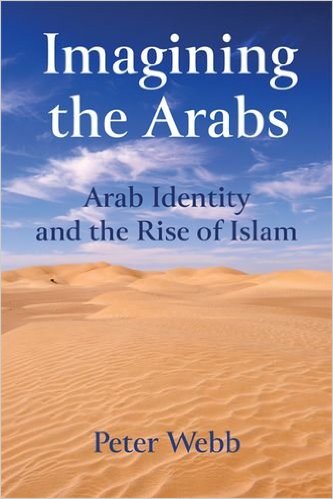The aithor
Peter Webb is a British Academy Postdoctoral Fellow (2015-18) at SOAS, University of London.
Presentation
A new interpretation of Arab origins and the historical roots of Arab identity
Who are the Arabs? When did people begin calling themselves Arabs? And what was the Arabs’ role in the rise of Islam? Investigating these core questions about Arab identity and history through close interpretation of pre-Islamic evidence and the extensive Arabic literary corpus in tandem with theories of identity and ethnicity prompts new answers to the riddle of Arab origins and fundamental reinterpretations of early Islamic history.
It is revealed that the time-honoured stereotypes depicting Arabs as ancient Arabian Bedouin are entirely misleading: the essence of Arab identity was in fact devised by Muslims during the first centuries of Islam. Arab identity emerged and evolved as groups imagined new notions of community to suit the radically changing circumstances of life in the early Caliphate. The idea of ‘the Arab’ was a device used by Muslims to articulate their communal identity, to negotiate post-Conquest power relations, and to explain the rise of Islam. Over Islam’s first four centuries, political elites, genealogists, poetry collectors, historians and grammarians all participated in a vibrant process of imagining and re-imagining Arab identity and history, and the sum of their works established a powerful tradition that influences Middle Eastern communities to the present day.

Content
Acknowledgements; Note on the Text; Introduction;
Part 1: The Rise of Arab Communities
1. The Rise of Arab Communities; I. Arabs and pre-Islamic Textual Traditions; II. Arabs in Arabia: ethnogenesis, interpretations and problems; III. An Arabness pretence: pre-Islamic ‘Arab’-cognates reconsidered;
2. Pre-Islamic ‘Arabless-ness’: Arabian Identities; I. The Arabic Language: a signpost to Arabness?; II. The search for Arabs in pre-Islamic poetry; III. Contextualising the ‘Arabless’ Poetry: ethnic boundaries in pre-Islamic Arabia; IV. The rise of ‘Arab’ poetry; V. Transition from ‘Ma?add’ to ‘Arab’: case study of Dh? Q?r; VI. Pre-Islamic Arabian identity: conclusions;
3. Arabness from the Qur’an to an ethnos; I. ‘Arab’: an ethnonym resurrected?; II. The Qur’an and Arabness; III. Early Islam and the genesis of Arab identity;
Part Two: The Changing Faces of Arabness in Early Islam;
4. Interpreting Arabs: defining their name and constructing their family; I. ‘Arab’ defined; II. Arabness and contested lineage; III. Arab genealogy reconsidered: kinship, gender and identity; IV. The creation of ‘traditional’ Arab genealogy; V. Defining Arabs: conclusions;
5. Arabs as a people and Arabness as an idea: 750-900 CE; I. Arabs in the early Abbasid Caliphate (132-193/750-809); II. Forging an Iraqi ‘Arab Past’; III. al-J?hiliyya and imagining pre-Islamic Arabs; IV. Arabs and Arabia: changing relationships in the third/ninth century; 6. Philologists, ‘Bedouinisation’ and the ‘Archetypal Arab’ after the mid-third/ninth century; I. Philologists and Arabness: changing conceptions of Arabic between the late second/eighth and fourth/tenth centuries; II. The transformation of Arabness into Bedouin-ness; III. Bedouin Arabness and the emergence of a J?hiliyya archetype; IV. Conclusions; Imagining and Reimagining the Arabs:
Conclusions; Bibliography.
